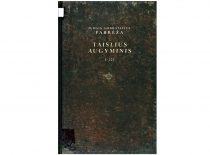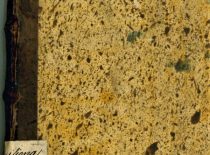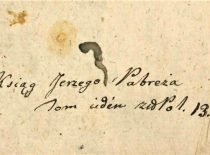If you wish to use the photographs published in the exhibitions, please write a free-form request to the Director of the KTU Library and obtain her permission.
The year 2021 was declared by the Lithuanian Parliament as the year of the cleric, doctor and scholar Jurgis Ambraziejus Pabrėža (1771-1849).
Writer, literature historian, lecturer at the University of Lithuania, Priest Juozas Tumas-Vaižgantas wrote: “I argued with Kazimieras Būga about how the surname Pabreža should be written: with ė or e. He insisted to use ė. I had this reasoning. People from Samogitia and Telšiai regions pronounce ė, like ie: gėda – gieda (Eng. shame). So if Pabreža would be written with ė, it would be pronounced as Pabrieža; however, they pronounce this vowel of the surname in a “hard way”, just like with Russian ə: Pabrəža, just like Səda. If we write Seda without the dot, we should do the same with Pabreža too and write it without the dot. However, Būga did not recognice my reasoning as decisive, so I had to give in and start writing with ė” (Vaižgantas, 1929, p. 59). According to Vaclovas Biržiška, those who wrote about Jurgis Pabrėža in the past, “usually regarded him as a nobleman and even as having the mark of a Raven (Polish “Ślepowron” coat of arms), but neither the Lithuanian Heraldry, nor the heraldic lists of Lithuania do not know of any Lithuanian noblemen as Pabrėžos, but there were a lot people with Pabrėžos surname among the peasants in the 17th century, in the present-day borders of the Kretinga district” (Biržiška, 1963, p. 306).
After studying at the parish school in Kretinga from 1785 to 1786, Jurgis Pabrėža enrolled in the Franciscan Gymnasium in Kretinga, where he graduated in 1792. The following year, he went to Vilnius and started studies at the Faculty of Medicine of the Grand Duchy of Lithuania’s Higher Education School (now Vilnius University), where he studied medicine, botany, physics, chemistry, law, and theology, learned eight languages, but dropped out in 1794.
In 1794, Pabrėža joined the Varniai Seminary, and in 1796, he was ordained as a priest by the Bishop from Samogitia Steponas Giedraitis. He was a priest in many parishes: Šiluva, Raudėnai, Tverai, Kartena, Plungė, Kretinga.
Pabrėža’s life was linked to the Franciscans from his childhood: his uncle Aleksandras Pabrėža was a Franciscan, so he also wanted to join a monastery himself. In 1816, Pabrėža joined the Third Franciscan Order in Kretinga, and a year later he took his perpetual vows and received the name Ambraziejus. According to Biržiška, “before joining the monastery, he got the agreement of his future supervisors to not move him anywhere from Kretinga, and a permission to leave the monastery to preach sermons or to gather herbs” (Biržiška, 1963, p. 308–309).
From 1817 to 1821, Pabrėža taught Latin, natural sciences, geography and religion at the Kretinga Bernardine School, and served as the chaplain of the gymnasium. In 1821, he was dismissed as a teacher and appointed to be the preacher of the monastery. Biržiška tends to doubt that Father Ambraziejus was teaching only until 1821. According to him, other biographers claim that Pabrėža was a teacher until 1839, “until the authorities took the school away from the monastery (according to Valančius, the school was closed in 1836 VII 17)” (Biržiška, 1963, p. 309).
Father Ambraziejus travelled extensively, collecting historical and ethnographical material, as well as botanical specimens. He was known as a great preacher. His speeches were based not only on texts from the Bible and famous preachers, but also on historical and ethnographical facts. He maintained contacts with Bishop Motiejus Valančius, Priest Jonas Krizostomas Gintila and other intellectuals of the late 18th and early 19th centuries.
Father Ambraziejus had a special relationship with the historian Simonas Daukantas, who was the first to write about the history of Lithuania in Lithuanian language. It is believed that Daukantas met Pabrėža in 1834, when he came to Samogitia for a holiday, and maintained friendly relations until the priest’s death. They were linked by their work, and in addition, Pabrėža distributed the historian’s books, took care of his relatives, etc. They only had dissagreements over the spelling: “Pabrėža had his own spelling system, different than the one of Daukantas, and he adhered to it in all his Samogitian writings” (Biržiška, 1963, p. 309).


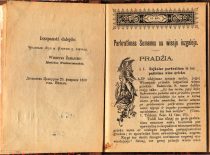

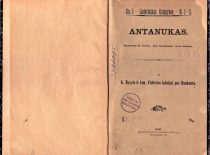
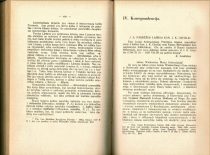
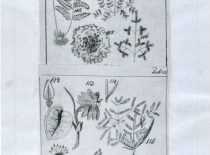
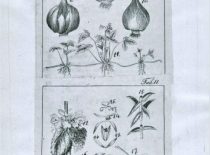
![Pabrėža, Jurgis. (1900). Botanika arba Taislius auguminis. Shenandoah [Pa.]: [Simano Daukanto literariška draugystē Massachusets'o valstijos]. Pabrėža, Jurgis. (1900). Botanika arba Taislius auguminis. Shenandoah [Pa.]: [Simano Daukanto literariška draugystē Massachusets'o valstijos].](https://library.ktu.edu/wp-content/uploads/sites/53/2022/05/Botanikai-1024x768-1-210x155.jpg)
![Pabrėža, Jurgis. (1900). Botanika arba Taislius auguminis. Shenandoah [Pa.]: [Simano Daukanto literariška draugystē Massachusets'o valstijos]. Pabrėža, Jurgis. (1900). Botanika arba Taislius auguminis. Shenandoah [Pa.]: [Simano Daukanto literariška draugystē Massachusets'o valstijos].](https://library.ktu.edu/wp-content/uploads/sites/53/2022/05/8-1024x882-1-210x155.jpg)
![Pabrėža, Jurgis. (1900). Botanika arba Taislius auguminis. Shenandoah [Pa.]: [Simano Daukanto literariška draugystē Massachusets'o valstijos]. Pabrėža, Jurgis. (1900). Botanika arba Taislius auguminis. Shenandoah [Pa.]: [Simano Daukanto literariška draugystē Massachusets'o valstijos].](https://library.ktu.edu/wp-content/uploads/sites/53/2022/05/Pirma-1024x768-1-210x155.jpg)
